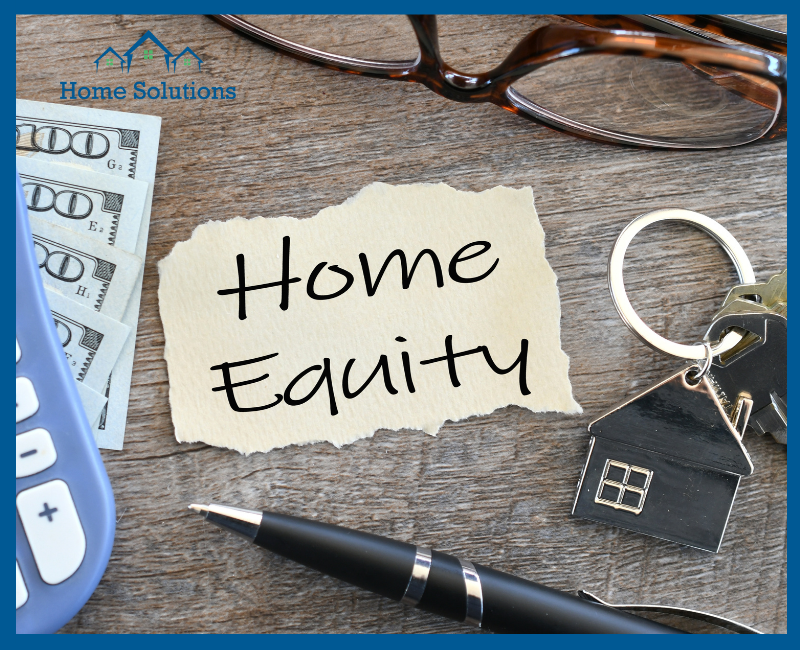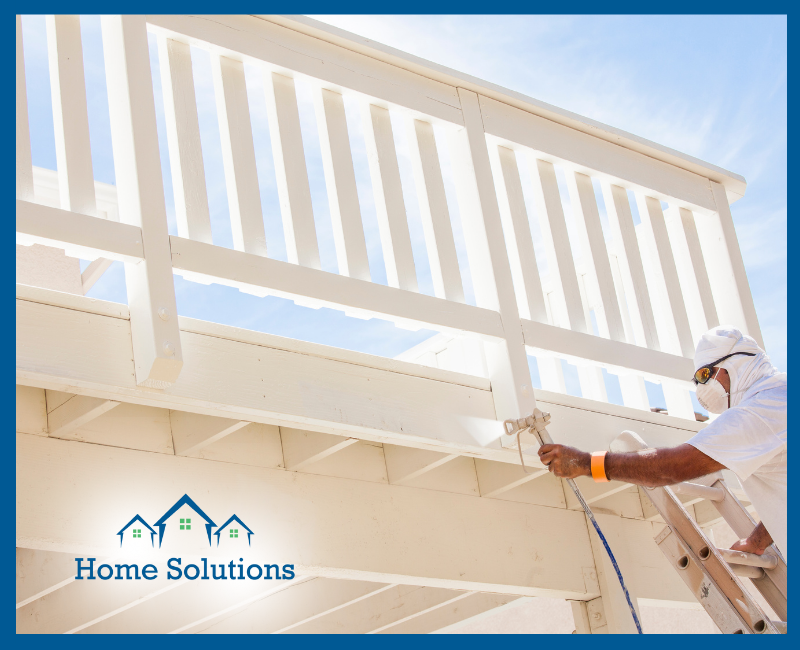Renting out your property can be a lucrative venture, but it’s essential to approach it strategically. There are numerous factors to consider, from finding reliable tenants to managing maintenance and finances. Check our tips below and partner with Home-Solutions. With our expertise in tenant screening, property upkeep, and financial management, you can enjoy the benefits of rental income without the daily stress.
Many people mull over the idea of renting out their homes. They may want the benefit of extra income to save money or pay down debt, or they may see it as an alternative to selling during a housing slump, a way to wait things out until the economy improves.
The motives are many, but renting may become more trouble than it’s worth when appropriate considerations aren’t made. Here are five steps that will get you going in the right direction.
If you are lucky enough to live in a tourist-friendly area, like near the beach or a major city, renting out your home as a short-term or seasonal rental may be an option, too. Before you list your property on a site geared toward short-term rentals, such as Airbnb or Vrbo, find out the rules and regulations for these types of rentals in your town and city.
Key Takeaways
- The responsibilities of landlords are vast and can often come with unexpected costs. It helps to have some cash reserves, if possible.
- When screening a potential renter, running a deep background check is advisable. Make sure to ask for multiple references from renters you are considering.
- Know your rights and the rights of your tenants—it’s a good idea to familiarize yourself with the Fair Housing Act.
- During peak seasons you can rent your unit for even more, according to a study by Renthop.com. July through September appears to be the best time to locate a tenant; however, this seasonality can vary from city to city.
- If you have a home on a lake, near a beach, or close to another seasonal venue, it may be worth it to investigate short-term rental platforms.
1. Understand the Responsibility Involved
First, you must determine whether being a landlord is an obligation you can even handle. The benefits of renting are numerous, such as the ability to deter the vandalism that often plagues an empty home, the ease of tax breaks, and the ability to generate income that covers the bills and possibly even creates a profit.
However, being a landlord is also one more responsibility you’ll need to fit into your life, and it’s safe to assume that things will sometimes fail to run smoothly. You’ll need to stay on top of repairs and maintenance, collect rent, dole out more for your homeowners insurance policy, and try to avoid wear and tear on your property by keeping an eye on your tenant’s housekeeping skills.
It’s important to note that the Internal Revenue Service (IRS) typically requires that landlords report rental income on their tax returns. However, the IRS has a Minimal Rental Use rule, which states that if a dwelling unit is used as a residence, meaning your home, and was rented for fewer than 15 days, the rental income does not need to be reported. However, if rented for fewer than 15 days, the landlord does not get the tax benefits of deducting expenses, such as utilities, which would normally reduce taxable income.
2. Prepare Your Home for Renters
In a down market, you probably won’t be able to get away with renting out the home as is. Tenants are more attentive and choosy at such times, because of the increased availability of rental homes, and their expectations are much higher.
Prepare for the new tenant by thoroughly cleaning your home and making sure appliances are working and are in good condition. If you’ve decided that you are renting out a room or area within your house, make sure that you can secure that area from the rest of your home.
3. Market Your Home
Once the house has been straightened out, develop a list describing what makes it appealing so you can put it on the market. Take note of those commonly desirable features such as a washer and a dryer, air conditioning, and a garage. Use rental terms to help “sell” the property.
Words that’ll help you get a renter include: “granite,” “stainless steel,” “vaulted ceilings,” “maple,” and “hardwood floors.” Be sure to use all of the terms that apply to your home.
Next, post an advertisement for the home on reputable websites and in local newspapers. In addition, some real estate agents will work with owners to help rent out their homes, although the agent will take a commission if they find you a renter.
You can also hire a property management company to handle the legwork of renting out your house, but you will have to pay them. The cost varies by company but it is often between 8% to 12% of the monthly rent, and there may be other fees involved.
4. Hire Professionals to Help You Navigate the Financials
Turning your home into a residential rental property may seem like a simple task, but it’s important to talk with real estate attorneys and accountants to make sure you are abiding by tax laws, zoning ordinances, and local property rules.
You may qualify for tax deductions, but it’s important to know which exact expenses are deductible. Plus, there are limits on how much you can deduct each year, and the amount you are able to deduct may differ from the rental activity reported on your tax return.
An attorney can also help you navigate landlord-tenant regulations, which vary from state to state, and help you understand your community’s rules governing rental properties. You can also seek help drafting the lease, making sure that it follows local laws. Finally, talking with an attorney can help you determine suitable house rules and emergency contacts.
Set the cost of the rent by learning what other rental properties are going for in your neighborhood and community. Remember, potential tenants will be scouting around for deals, so set the rent at a competitive price and make sure you highlight all the most valuable aspects of your home.
5. Screen Tenants Carefully
Start looking for a tenant as soon as your property is ready to be shown. Then, choose your tenant very, very carefully. You need to be able to depend on this person not only to pay the rent on time but also to keep your home in good condition. Also, if the person is someone you may be cohabitating with, learn their habits so you won’t run into any nasty surprises.
Don’t forget to gather references for potential tenants and check their credit histories. You should also take safety precautions when screening a tenant—after all, this person is a stranger. Once you’ve found the right tenant, ask for a reasonable security deposit and arrange an appropriate payment schedule.
Should I Run a Credit Check on a Tenant?
It’s always a good idea to run a credit check on a potential tenant. The information contained in a credit report can tell you a lot about how financially responsible a prospective tenant is, and it can help you predict if they have the ability to pay rent on time. You can pull the tenant’s credit report directly from one of the three main credit bureaus (Experian, TransUnion, and Equifax) or use a specialized agency to gather the information you need.
What’s a Common Mistake Landords Make?
Not screening tenants thoroughly is one of the most common mistakes new landlords make. This, unfortunately, can lead to problems in the future, like late payments, issues with neighbors, and damage to the property.5 Even if a prospective tenant can move immediately and offers to pay a deposit, landlords should take the time to check out the person’s background. A standard rental application form can provide you with the information you need to obtain a credit report, and you also should contact employers and former landlords.
Is It a Good Idea to Hire a Property Management Company?
It can be a good idea if you are renting out your property but you don’t have the time or experience to handle the business. Keep in mind, though, that the property management company you hire will take a percentage of the rental profits. Most property management companies charge a monthly fee of between 8% and 12% of the monthly rent collected.
The Bottom Line
Renting out a home can be beneficial for both owners and tenants, but only if you take the time to address and prevent potential pitfalls. The chance to make some money, particularly in a tough housing market, is appealing, but don’t cut corners when finding and screening the tenant. After, all it’s still your house.
Unlock the potential of your property. Our expert property management team can help you navigate the rental market with ease. From tenant screening to financial management, we’ve got you covered. Call us today at (954) 545-3027 and follow us on Instagram @homesolutionspm.
Reference: [https://www.investopedia.com/articles/mortgages-real-estate/10/renting-out-home.asp]























